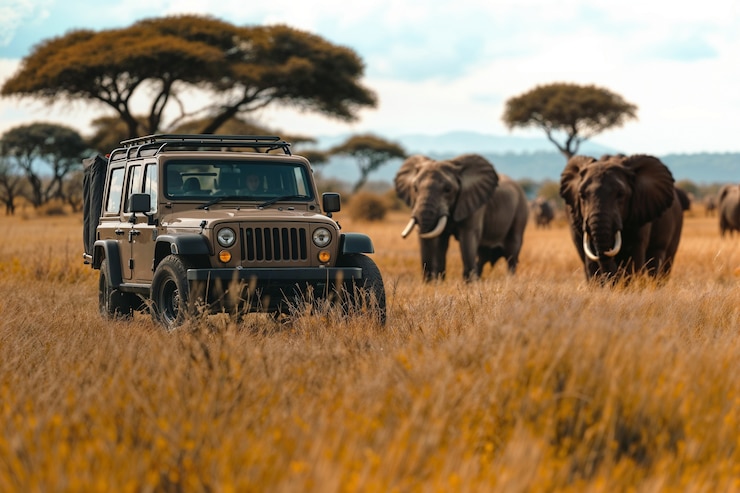
When traveling to other countries, I often find myself apologizing for my vegetarian diet. I might say, “There’s always someone at the table,” or “I know I’m the odd one out. Sorry for being difficult.” After all, being vegetarian is my choice—not due to an allergy—and it’s a privilege afforded to me because at home, I have access to plenty of nutritious alternatives. Many people around the world eat whatever is available, dictated by the resources they have and what can grow in their region, often resulting in an omnivorous diet.
Cultural and traditional practices play a big role in shaping local diets, so when traveling, I try to be open-minded and considerate while sticking to my vegetarian principles. For instance, I passed on meat kebabs in Dubai but tried camel milk, skipped horse meat in Iceland but tasted fermented shark with Brennivin, and instead of lamb in Israel, I enjoyed hummus and falafel.
I’ve realized that sometimes you need to compromise, pack your own snacks, or research vegetarian-friendly places in advance. Here are a few travel stories where I’ve navigated my vegetarian lifestyle on the road.
Years ago, I visited the Ginza neighborhood in Tokyo to dine at Tsurutokame, a restaurant that has been changing the Japanese dining scene since 2015. Unlike most eateries in Japan, which are dominated by male chefs due to industry norms, Tsurutokame is led by women. Situated in the basement of a high-rise, marked only by a small paper lantern, the restaurant was hard to find. Upon arrival, I met an interpreter who introduced me to the owner, Harumi Mikuni, who founded the restaurant with her husband, Osamu Mikuni. The restaurant is cozy, with only a 14-seat counter and a few tables.
For over an hour, in a private room, we discussed how women in a community develop their skills and progress to the main counter. They apprentice, live together, and practice culinary and cultural arts, ranging from cooking to flower arranging, singing, calligraphy, tea ceremonies, and conversation. Mikuni stressed that these women are well-rounded, attending opera on weekends and spending up to 12 hours a day in the kitchen. It’s a great honor for their families to see their daughters receive such unparalleled opportunities.
During our conversation, I tried to match Mikuni’s expressions, being respectful by smiling when she did and becoming serious when she was. After the interview, we went to the main counter to watch the chefs at work, who welcomed me with smiles and placed a beautifully prepared meal before me. Despite my dietary preferences, I was served a trio of salt-grilled fish—head, tail, and all. With everyone anticipating my reaction to the expertly crafted dish, I picked up my chopsticks, tasted the fish, and responded with gratitude. Meeting these remarkable women and witnessing their artistry was a memorable part of my visit to Japan, even if I had to step outside my usual diet.
In Peru, with its diverse climate from high altitudes to low plains, there are said to be over 4,000 types of potatoes, a staple in many local dishes. Throughout the country, from Lima to Cusco, meals feature ceviche, marinated beef or alpaca, chicken dishes, and hearty stews. As I traveled with my three children, we encountered another local source of nutrition: cuy, or guinea pig. Visiting an alpaca farm, we saw cuy in pens and roasted cuy on sticks being sold roadside. This was a lesson for my kids that in other cultures, animals are not necessarily household pets but can be vital sources of nutrition. The Andean region relies heavily on cuy, roasted with herbs and served with—you guessed it—potatoes.
Thankfully, I was able to find vegetarian options using apps and websites like HappyCow and Vanilla Bean. I also joined locals in enjoying the national cocktail, the pisco sour, a tangy drink made with pisco brandy, syrup, lime juice, egg whites, and bitters—delicious!
When I told my Kenyan guide, apologetically, of course, about my vegetarian preference, he shared a story about his grandmother, who decided to stop eating meat for health reasons despite Kenya being a meat-loving country. “Don’t worry,” he assured me, “we’ll provide a vegetarian lunch.” On a safari with Exodus Travels, I was focused on photographing the Big Five—lion, leopard, rhinoceros, elephant, and buffalo—instead of hunting. I easily found vegetarian meals in hotels, lodges, and camps, mostly enjoying Indian cuisine and dishes with beans and veggies. Before touring, I stocked up on snacks, baked goods, and fresh fruits at local stores.
I did miss out on sampling some local delicacies due to my diet. During a group stop at Choma Tayari, a local butchery, we saw meats displayed in the windows and gathered in a smoky room. While others enjoyed goat meat, I took in the vibrant scene. Locals, elbow to elbow, were absorbed in their meals, their plates full and conversations reserved for after dining—an experience I wouldn’t have on my own, and I appreciated the chance to glimpse authentic local culture.


